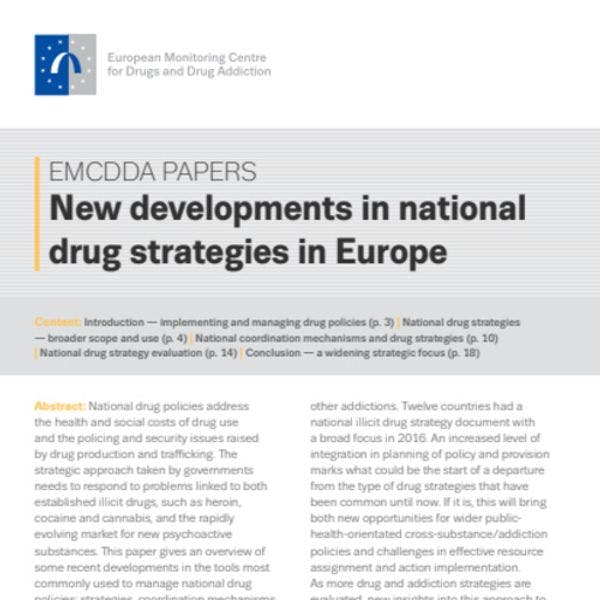Novedades en las estrategias nacionales en materia de drogas en Europa
Este documento presenta una visión general de las últimas novedades en las herramientas más utilizadas para gestionar las políticas nacionales de drogas: estrategias, mecanismos de coordinación y evaluaciones. Más información, en inglés, está disponible abajo.
National drug policies address the health and social costs of drug use and the policing and security issues raised by drug production and trafficking. The strategic approach taken by governments needs to respond to problems linked to both established illicit drugs, such as heroin, cocaine and cannabis, and the rapidly evolving market for new psychoactive substances. This paper gives an overview of some recent developments in the tools most commonly used to manage national drug policies: strategies, coordination mechanisms and evaluations. It is based on an analysis of reports on national drug policies compiled by the European Monitoring Centre for Drugs and Drug Addiction’s (EMCDDA’s) Reitox focal points in the EMCDDA reporting countries (28 EU Member States, plus Turkey and Norway), consultation with experts and scientific literature. Among the issues identified, the report notes a gradual change; some national drug strategies have broader scope, beyond illicit drugs, covering other substances and, to a lesser extent other addictions. Twelve countries had national illicit drug strategy document with a broad focus in 2016. An increased level of integration in planning of policy and provision marks what could be the start of a departure from the type of drug strategies that have been common until now. If it is, this will bring both new opportunities for wider public health-orientated cross-substance/addiction policies and challenges in effective resource assignment and action implementation. As more drug and addiction strategies are evaluated, new insights into this approach to strategic planning and its relative successes and future challenges will become more apparent.
